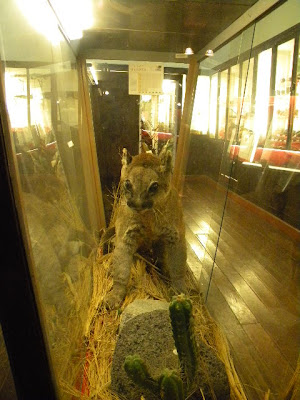El Museo de Historia Natural está
afiliado con una universidad en Cusco y está al lado de una iglesia (pero la
Catedral no, otra) en la Plaza de las Armas en un edificio bonito y grande con
un patio en dentro. El museo es muy pequeño, de dos salas. Incluye dioramas de los climas
principales de Perú (la selva, la costa, la sierra), muchas animales indígenas
disecados, ejemplos de los productos de agricultura y mostradores de la geología,
fungí y botánicas importantes del país.
|
The Natural History Museum is affiliated with a local Cusco university and is next to a church (but not the Cathedral) in the Plaza en a beautiful, big building with a courtyard inside. The museum itself is very small with 2 rooms. It includes dioramas of the main climates of Peru (jungle, coast, and mountains), many indigenous animals in taxidermy form, examples of agricultural products, and displays of the notable geology, fungal, and botanical features of the country. |






























